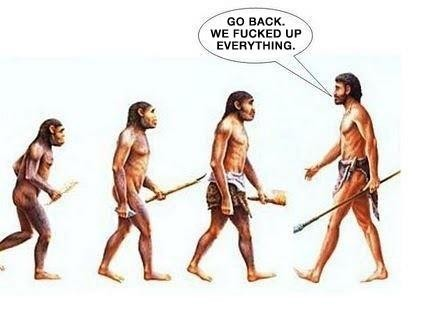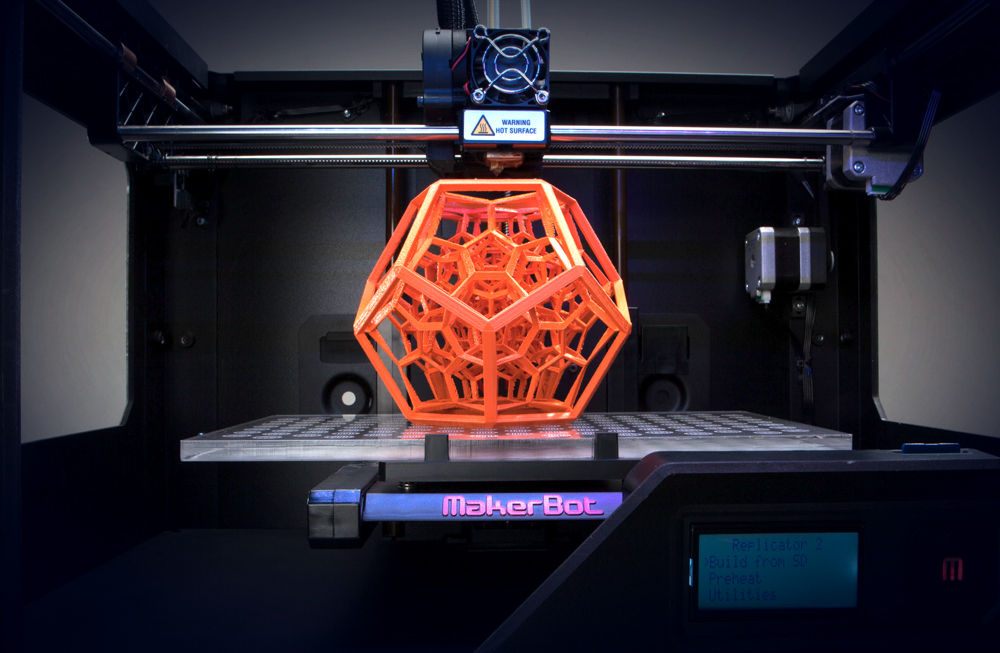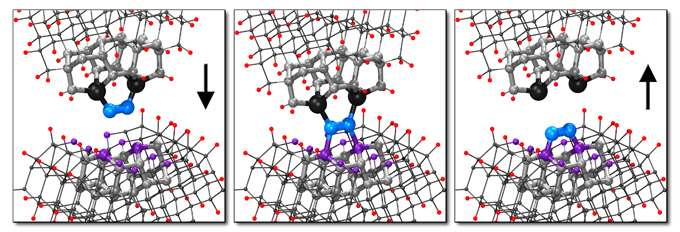
For a long time I’ve been interested in practical immortality and how we as a human race would go about achieving such a feat. To me, practical immortality seems like a natural progression to evolution. We as humans are trying to master the physical world, we have evolved from single celled organisms to chimps to humans. Combining with the technology we invent in order to aide and continue our evolution as a human species seems like the natural and logical progression. We are slowly starting to understand how exactly our world works, and as we do it seems reasonable to believe that we will be able to reverse engineer solutions to some of the worlds toughest problems.
I recently started researching a little deeper into practical immortality and for the last few days have putting together what I’ve found to be the most compelling compliation of theories for potentially achieving practical immortality.
Part I: Theories of Aging
Part II: Engineering Negligible Senescence
Part III: 3D Printing
Part IV: Nanotechnology
Part V: Philosophy
Part VI: Resources

Part I: Theories of Aging
I am of the firm belief that practical immortality will be attainable within our lifetime. To re-state exactly what I mean, its important to re-frame the argument to one that has less negative preconceptions. The word ‘immortality’ seems to have a lot of negative preconceptions and raises a number of ethical and philosophical questions which I’m not trying to address immeditely. As such, ‘immortality’ is not a good way to describe this line of thinking.
To re-frame the idea, you can think of practical immortality as curing the disease of age – meaning you can still die, but just not from old age. If you start thinking of age as a disease, it’s actually the #1 killer of humans – 90% of people in developing nations die from an age related disease. Our goal with practical immortality is to find a cure for dying from old age. We are searching not for a cure to death, but a cure to premature death due to system failure. With our current understanding of science we have a pretty good idea of where to start our analysis.
Throughout history there have been several theories as to what causes aging. Initially aging was thought of as just the normal wear and tear a body accumulates with time – similar to how a knife’s edge becomes dulled with use. It turns out that it’s not that simple.
Not dying or declining with older age is called negligible senescence and it basically means that there is no measurable reduction to the animals ability to reproduce, or any functional decline as they age. Death rates in negligibly senescent animals don’t increase with age like they do in senescent animals.

In our journey to decode the causes of aging, the most helpful place turned out to nature itself. There are several types of animals who don’t die because of old age like the Rougheye rockfish (205 years), Aldabra giant tortoise (255 years), Ocean Quahog Clam (405 years) and Hydras (biologically immortal). The most surprising & common animal would probably be the lobster – they don’t die of old age. The only way a lobster dies is when it’s killed via disease or a natural predator. Poor lobster.
In analyzing these animals, scientists have isolated a ribonucleacprotein called telomerase which we now know is an enzyme that plays a critical role in human aging. Telomerase allows for the replacement of short bits of DNA (telomeres) when cells are dividing. As we age, our cells reach whats called their Hayflick limit – basically the point at which the cell division stops because the telomerase runs out. As more and more cells reach their Hayflick limit, your cells stop replicating and this eventually leads to a number of age related problems including death.
Similarly, the DNA damage theory of aging proposes that aging is the consequence of an accumulation of naturally occurring DNA damages. DNA damage appears most in the brain, muscle, liver and kidneys cells which happen to be the ones most commonly affected with old age. These accumulated DNA damages are another likely the cause for the decline with age.
Studies show that a calorie-restricted diet in mammals improves lifespan, and this improvement is associated with a decrease in oxidative DNA damage. There are also several inherited genetic defects that directly affect ones ability to repair DNA damage and the people who have these defects also experience premature aging. This suggests that there is a causal relationship between the DNA damage and aging. In comparisons between different mammalian species that have different lifespans, their DNA repair capacity was found to correlate with lifespan.
In order to fight aging, we need to first understand exactly how and what everything does in the human body. Once we have those blueprints, we can systematically build solutions to the problems that challenge our mortality.
A biomedical gerontologist named Aubrey deGrey is doing just that and is working on a framework called Strategies to Engineer Negligable Senscence (SENS).
Part II: Engineering Negligible Senescence
SENS is a framework that is pushing to eventually eliminate age-related diseases and infirmity by repeatedly reducing the state of senescence in organisms. The SENS framework is geared towards researching and implementing periodic medical interventions designed to repair, prevent or render irrelevant all the types of molecular and cellular damage that cause age related degeneration in order to avoid debilitation and death from age-related causes.

Aubrey DeGrey – Biomedical Gerontologist
De Grey defines aging as “the set of accumulated side effects from metabolism that eventually kills us” and more technically “a collection of cumulative changes to the molecular and cellular structure of an adult organism, which result in essential metabolic processes, but which also, once they progress far enough, increasingly disrupt metabolism, resulting in pathology and death.”.
There are seven main types of aging that damages cells and a reversal in all seven would make humans negligibly senescent (biologically immortal – not affected by age):
1. Cancer-Causing Nuclear Mutations / Epimutations – OncoSENS
These are changes to the nDNA (genetic information) or to proteins which bind to the nDNA. A mutation in the functional gene of a cell can cause that cell to malfunction and produce a malfunctioning product. Certain mutations can lead to cancer, and since non-cancerous mutations do not contribute to aging within a normal lifespan, cancer is the only type of damage that must be addressed.
This SENS program focuses on a strategy called whole-body interdiction of lengthening telomeres. By restoring telomeres it protects the ends of the DNA from being cut off after successive divisions
2. Mitochondrial Mutations – MitoSENS
Mitochondria are components in our cells that are important for energy production. They contain their own genetic material, and mutations to their DNA can affect a cell’s ability to function properly. Indirectly, these mutations may accelerate many aspects of aging.
3. Intracellular Junk – LysoSENS
Cells constantly break down proteins and other molecules that are no longer useful or which are harmful. The extra molecules that can’t be digested are accumulated as junk inside our cells. A few examples of this are lipofuscin granules, atherosclerosis, liver spots and Alzheimers disease. These are all different kinds of neurodegernerative diseases associated with the same problem of built up cell junk.
One way to potentially remove junk inside the cell is to add a new enzyme to the cells digestion organ, the lysosome. These enzymes would be taken from bacteria and other organisms and added to the human lysosome to carry out the specific job of consuming the extra intracellular junk.

4. Extracellular Junk – AmyloSENS
Junk protein can also accumulate outside of our cells which is again, bad. One example is the amyloid senile plaque (junk) seen in the brains of Alzheimer’s patients.
5. Cell Loss and Atrophy – RepleniSENS
Some of the cells in our body cannot be replaced or die more quickly than they can be replaced. This decrease in cell number affects some of the most important tissues in the body. Muscle cells in the heart become frailer with age. Loss of neurons in the substantial nigra causes parkinsons disease, while a loss of immune cells impares the immune system.
Stem cell treatments are playing an increasingly important role in solving these issue. Although there have been many successful cases and treatments, most are still very experimental.
6. Cell Senescence – ApoptoSENS
This is a phenomenon where cells are no longer able to divide, but also don’t die and let others divide – Hayflick limit. They may also do other things that they’re not supposed to, like secreting proteins that could be harmful. Cell Senescence is one of the proposed causes or consequences of Type II Diabetes.
7. Extracellular Protein Crosslinks – GlycoSENS
Cells are held together by special linking proteins, and when too many corss-links form between cells in a tissue, the tissue can lose its elasticity which causes problems such ash arteriosclerosis, presbyopia and weakened skin texture.
Although controversial, it seems that DeGrey’s approach with SENS is our best bet for ending the disease of age and becoming negligibly senescence.

Part III: 3D Printing
It is my belief that the technology from the molecular sciences (biomedicine) will be combined with the technology from 3d printing to create some extremely disruptive tech that will aid be pivotal in our quest for practical immortality.

MakerGear M2 3d Printer – $1,700
3d printing arranges layers of melted plastic (IPA or ABS) onto a glass sheet much like a normal printer but with plastic. It then moves up vertically and prints another layer of plastic on top of the first layer. After doing this several times the machine is able to “print” intricate 3 dimensional products. The technology is advancing very quickly, and a desktop printer with 1 extruder costs anywhere from $500 – $2,000 today.
Along with increased print speed and finer quality, there are several iterations to the 3d printing technology that I see are needed before I would consider it fully evolved. In my opinion, the first hurdle is the ability to print using multiple separate colors of plastic. Currently we can only easily print in 1 solid color. This is okay, but what if I want to have one part be black, and another part red? Multiple extruders would allow for a print to have multiple different plastics & colors all extruded from the same nozzle.
The next advancement would be to be able to 3d print with different types of materials. Metal and glass come to mind as good materials to be able to print with. It would also be cool to be able to print using a material embedded with computational abilities. Maybe silica with little accelerometers and sensors embedded inside which would enable you to instantly track the object you printed out and send its info via wifi to your computer.
If we had the ability to print with multiple materials it would theoretically be possible to print out a basketball using rubber, plastic, and a computiational material embedded w/ an accelerometer. You could then print out your basketball and instantly start collecting data to your computer that displays how many times it bounces, how fast its going, on average how far each shot falls from the hoop, etc.
The evolution after the ability to print multiple materials from one machine in a single print would be the ability to scale its size.This would involve printing full sized cars and houses using a single 3d printing machine.
People are already making this happen, and even though its in the beginning stages and very rough, in a few years it should have the same precision as the desktop 3d printers that are being sold today.
WikiHouse is an open source nonprofit that has created and made available for free, the plans to build a full house that snaps together like ikea furniture. All you need to make it for yourself is a 3d printer or CNC machine: http://www.wikihouse.cc/
Also, heres a video of a primitive 3d printer being used to build an entire house: http://www.wimp.com/printerhouse/
In my eyes the two most important technologies that will come from advances in 3d printing will be in nanotechnology (molecular assemblers & factories) and space manufacturing.
Part IV: Nanotechnology
Focusing on the nano scale, our 3d printing technology could be eventually be used to arrange strings of molecules together to create products from the molecular level. Instead of feeding the printer ABS plastic, at the nano scale it could be fed a string of molecules and arrange them in a programmed way with atomic precision. Similar to the evolution of the 3d printing technology, first we start with the ability to print with 1 type of molecule, then we invent the ability to print with multiple molecules in a single print. As the technology gets more sophisticated we should be able to print anything we have a program for with molecular level accuracy. For a visual illustration of one possible version of this technology check out this animation: http://www.youtube.com/watch?v=zqyZ9bFl_qg
The largest hurdle we face in scaling 3d printing to the nanoscale and creating molecular assemblers is a process called mechanosynthesis.
Mechanosysnthesis is a type of chemical synthesis reaction that occurs when a machine is used to move specific molecules to specific molecular sites to cause a specific chemical reaction to occur.

Our goal with mechanosynthesis would be to create a system much like the ribosomes in our bodies. The way ribosomes work is they receive instructions from messenger RNA and then assemble specific sequences of amino acids to construct protein molecules. This fits the definition of a molecular assembler, except molecular assemblers refer to human made devices, while ribosomes are part of our evolution.
Once we have the technology to recreate the functionality of ribosomes and perform mechanosynthesis, the next step would be to replicate this process thousands and millions of times to create molecular assemblers, and eventually desktop nanofactories.
Eric Drexler defines molecular assemblers as a “proposed device able to guide chemical reactions by positioning reactive molecules with atomic precision”.

Eric Drexler – MIT PhD & Author of Engines of Creation: The Coming Era of Nanotechnology
One example of a technology using a molecular assembler would be a desktop nanofactory, which would be comprised of millions of molecular assemblers all using mechanosynthesis to combine strings of molecules to create more complex atomically precise parts.
While this nanotechnology seems like its many years away – we are well on our way to understanding and using this technology. The transistor technology in cellphones has semiconductors that are measured at 10 micrometerers, this is well in the range of primitive nanotechnology. In addition, IBM has created a movie animation using atoms like pixels: http://www.youtube.com/watch?v=oSCX78-8-q0&feature=player_embedded
Once we have the ability to manufacture things at the molecular level, we will probably turn our attention to nanorobots and specifically ones that function within the human body – nanotechnology as a biomedicine.
Nanorobots are essentially an adaptive machine version of bacteria. Once we are able to reproduce the functionality that bacteria posses, we will be able to create nanorobots that aid in repairing humans on the cellular level. Nanorobots will likely have the capacity to be 100x – 1,000x more powerful than their biological counterparts (bacteria).
Today we already have several interesting types of proposed nanorobots:
Microbivore Nanorobot:
These nanorobots would function similarly to the white blood cells in our bodies, but would be designed to be much faster at destroying bacteria. Microbivore nanorobots would be able to eliminate bacterial infections in a patient within minutes, as opposed to the weeks required for antibiotics to take effect.
Microbivore nanorobots would be designed to seek out specific antigen markers in target bacteria. After finding the problem bacteria, it would consume / destroy the bacteria much like phagocytosis which is used by white blood cells to destroy unwanted materials. After the bacteria is found and destroyed, it would then be discharged into the bloodstream as harmless fragments.
Respirocyte Nanorobot:
These nanorobots would function in a similar way to the red blood cells in our bodies except they’re designed to carry much more oxygen than natural red blood cells. This design could be very useful for patients suffering from anemia.
These respirocyte nanorobots would contain a tank in which oxygen is held at a high pressure, sensors to determine the concentration of oxygen in the bloodstream, and a valve that releases oxygen when sensors determine that the human needs additional oxygen.

Clottocyte Nanorobot:
These robots function similarly to the platelets in our blood. Platelets stick together in a wound to form a clot, stopping blood flow. Depending on the size of the wound, significant blood loss can occur before a clot is formed.
A system of clottocyte nanorobots would store fibers until they encounter a wound. At that point, the nanorobots would disperse their fibers, which would then come together to create a clot in a fraction of the time that natural platelets do.
Cellular Repair Nanorobot:
These robots would be built to perform surgical procedures more precisely. By working at the cellular level, such nanorobots could prevent much of the damage caused by an imprecise scalpel.
These are a few of the many types of possible nanorobots we may build in the future.
With nanotechnology it’s very important that we proceed with caution and build in saftey measures as we get closer to a fully evolved version of the technology. If we don’t do execute the nanotechnology with the correct saftey systems it could be extremely dangerous to integrate them with our bodies and world. While this technology is amazing, it can also be extremely dangerous.
With nanorobots entering the human body the ideal process would be to have the nanorobts enter the body, perform their task, and then flush themselves out. once we integrate nanotechnology with our human bodies, there are two very important functaionlities that we mush leave out of the nanotech.
The first is to not allow any nanorobots to have the functionality of self-replication. It is much safter to disable this feature (while it is theorethically possible to make nanorobots self replicate, it is much safer to have them producted in a nanofactory than allow them this ability.
The reason we don’t want self-replicating is because inorder to self replicate the nanorobot would likely need to “feed” off its human host, and that is a very dangerous scenario.
The second thing we don’t want are nanorobots to have the ability to update their software / programming remotely. Nanorobots should be hardcoded and built for a specific purpose in a nanofactory, and not have any software that can be accessed or altered after being created. If the nanobot were able to be programmed remotely there would be a possibility that someone could hack into the system and change their programing. You’re pretty much screwed if you have hacked nanorobots inside of you, so it’s definitely safer to stick to hardcoded nanobots.
While extremely interesting, nanotechnology can also be very dangerous. Since we don’t know exactly how this technology will play out, there are a bunch of worse case scenario theories that we will need to think about while moving forward. One of the most interesting theories is called the grey goo theory, which is a hypothetical end of the world scenario involving nanorobots where out-of-control self-replicating robots consume all matter on Earth while building more of themselves, turning the world into a “grey goo” of nanorobots – ideally this doesn’t happen.

Part VI: Philosophy
It is my belief that humans in their most basic form are based on some type of program or code. While we have our differences, humans are pretty much the same across the board. We all have the same problems, deal with the same struggles, and worry about the same things. It doesn’t matter where you are – we all react the same way to certain inputs which must mean that there is a common programming somewhere in what makes us work.
Unfortunately, as a society we aren’t very open about these things so it’s not obvious that everyone is going through the same confusing process independently. The internet is helping to remedy this problem by providing a massive communication network connecting us all. The anonymity gained via the internet allows people to express their true selves. In doing this we realize we are all pretty much alike. Behind this wall of an anonymity we’re able to express views held closest to us that we wouldn’t dare share in public for fear of not being understood or agreed with by your peers.
We owe our minds to the deaths and lives of all the creatures that were ever engaged in the struggle called Evolution. Our job is to see that all this work shall not end up in meaningless waste.
The problem of practical immortality is one that I believe can be solved with clever engineering and will progress naturally as technology evolves. Since these functions exist already in nature, we know it’s at least possible. It is simply a matter of if humans are smart enough to figure out how to reverse engineer similar systems for ourselves. Nature has given us a beautiful blueprint, and by analyzing how it works we can reverse engineer our way to creating our own version of nature but controlled via human technology.
Life is about experiences, thoughts, progress, and relationships. Death is an end to life, and is something to be cured, not lived with.
We have the brainpower needed to solve the problem of death, it’s simply a matter of time, effort and money.
As we shed our mortality, an entire universe of new experiences and questions unfold.
Part VI: Resources
Videos:
http://www.ted.com/talks/aubrey_de_grey_says_we_can_avoid_aging.html – Aubrey deGrey on Aging
http://www.ted.com/talks/ray_kurzweil_announces_singularity_university.html – Ray Kurzweil on the Singularity
https://www.youtube.com/watch?v=nV1M5ARfHAc – We are evolving into a meta – intellegence – Dr. Peter Diamandis
http://vimeo.com/61236149# – Jason Silva on being self aware.
https://www.youtube.com/watch?v=Mlt6kaNjoeI – Open Source Cities
http://www.youtube.com/watch?v=IS4Xw8f9LCc&feature=share – 3d Printing
http://www.ted.com/talks/jay_silver_hack_a_banana_make_a_keyboard.html – Programmable Objects – Hacking a banana to make a keyboard
http://www.youtube.com/watch?v=oSCX78-8-q0&feature=player_embedded – IBM atomic sized animation
http://www.youtube.com/watch?v=xP9m-1b_MRc – NanoRobot Technology – Molecular Assemblers
http://www.youtube.com/watch?feature=player_embedded&v=lKJvFnQYhKc – Nanowires
http://www.youtube.com/watch?feature=player_embedded&v=43vjEiFckbw – Life is awesome (Louis CK)
Wiki:
http://en.wikipedia.org/wiki/DNA_damage_theory_of_aging
http://en.wikipedia.org/wiki/Negligible_senescence
http://en.wikipedia.org/wiki/Aubrey_de_Grey
http://en.wikipedia.org/wiki/Biological_immortality
http://en.wikipedia.org/wiki/Strategies_for_Engineered_Negligible_Senescence
http://en.wikipedia.org/wiki/Mechanosynthesis
http://en.wikipedia.org/wiki/K._Eric_Drexler
http://en.wikipedia.org/wiki/Molecular_assembler
http://en.wikipedia.org/wiki/Space_colonization
Short Stories (Life changing – Mind Blown):
http://filer.case.edu/dts8/thelastq.htm
http://www.skyhunter.com/marcs/GentleSeduction.html
Recent News:
http://web.mit.edu/newsoffice/2013/decoding-the-structure-of-bone-0416.html
http://www.thejournal.ie/science-conference-de-extinction-840062-Mar2013/
Books:
http://www.physics.utu.fi/projects/kurssit/UFYS3084/Engines%20of%20Creation.pdf
http://www.sens.org/files/pdf/Burd-PP.pdf
– J



Jeanelle the Retard
May 26, 2013 -
Immortality to me is to live on in peoples minds all over the world after you are long gone like elvis, marlyn monroe or james dean. James dean did this very well. So how can this be done today. How would you reach this status ?
Julian Sarokin
Apr 5, 2014 -
This post was more tackling the problem of physical immortality – the other type (living on in peoples minds) is usually accompanied by great accomplishments.
musicistabest
May 26, 2013 -
People say they live for immortality: life after death. And so they rush to die, while they grab all they can. Is this kind of hypocritical?
Matthew
May 26, 2013 -
How is immortality defined these days? If it’s not living forever, can it also be considered a “state of mind”?
Or are there other achievable methods to gain such an accolade?
Dynamo
Aug 13, 2013 -
It is not immortality, it is living indefinitely without the diseases of old age. We already live indefinitely usually from anywhere from 60 to 100 years, but the final decades of our lives are blighted by the debilitating illnesses of old age such as hair loss, wrinkled fragile skin, muscle weakness, mental impairment, fragile bones etc which stop us from leading active fullfilling lives. There doesn’t seem to be much point in living a long life if a large part of that life is not going to be fulfilling. If the ailments of old age could be cured then people could live fulfilling active lives right up until they die which could be well over a hundred years. People would still die, but of other causes. In my opinion it is far better to die quickly from something than to suffer decades of slow decline which prevents you from enjoying life. Life would seem much more worthwhile if even at 80 you still had the good looks, energy and vitality as when you were 18.
Julian Sarokin
Apr 5, 2014 -
Correct — “practical immortality” is different from full immortality. You’ll still be able to die, but just not from old age.
Al
Oct 29, 2013 -
I believe eventually ageing will be cured and treatment readily available however being realistic I doubt even modest anti ageing medication will come to market for at least another several decades. The reason; a lack of investment, ethical / political restraints and of course medical trails (that can drag out for many years / potentially decades even once a medication has been created. I’m 30 and my best guess is I might see / experience the tail end of first line treatments in my 60’s / 70’s. I think really, this isn’t going to get exciting / readily available until the 22nd century, which I very much doubt I would see, let alone experience. Exciting stuff for future generations though for sure.
Julian Sarokin
Apr 5, 2014 -
It’s true that we’re probably a ways away from these treatments. You may be early enough to get treatment to save you for another 50 years, which is enough time to save another 100 years. At some point you’ll ride the wave.
Practical Immortality – If Age Is a Disease, Can We Cure it? | NYC Startup News
Apr 5, 2014 -
[…] by jcsarokin [link] […]
Practical Immortality – If Age Is a Disease, Can We Cure it? | My Blog
Apr 5, 2014 -
[…] http://juliansarokin.com/practical-immortality-if-age-is-a-disease-can-we-cure-it/ […]
Silence DoGood
Apr 9, 2014 -
You may find this interesting.
Practical Immortality: If Age is a Disease, Can We Cure It? | Digital Immortality
May 2, 2014 -
[…] Practical Immortality: If Age is a Disease, Can We Cure It? […]
moncler,moncler soldes
Dec 26, 2014 -
moncler,moncler soldes
L du départ venue, affairés à vérifier moncler,moncler soldes que rien ne manquait, on s rendu compte que le “pingouin” était moncler,moncler soldes toujours là à se balancer d côté à l mais sans revenir à sa posture “naturelle”. “Emmenons le !”,…
elijahtruth
Jan 17, 2015 -
Very insightful my friend… For viewing the now end of ageing and death go to the site wherein death now ends… View at http://adamandevewordresearch.blogspot.com/ and to become part of mankinds destint/history/future go to http://www.adamandevewordresearch.org… Respect
7 Different Types of Human Immortality
Feb 16, 2015 -
[…] More info: http://juliansarokin.com/practical-immortality-if-age-is-a-disease-can-we-cure-it/ […]
First Milestone: 100,000 Strong
Mar 11, 2015 -
[…] Practical Immortality – if Age is a Disease, Can we Cure it? […]
eternaljoysite
Oct 19, 2018 -
This is interesting post, and immortality becomes real after being discovered by Allen Omton and Serge Dobrow